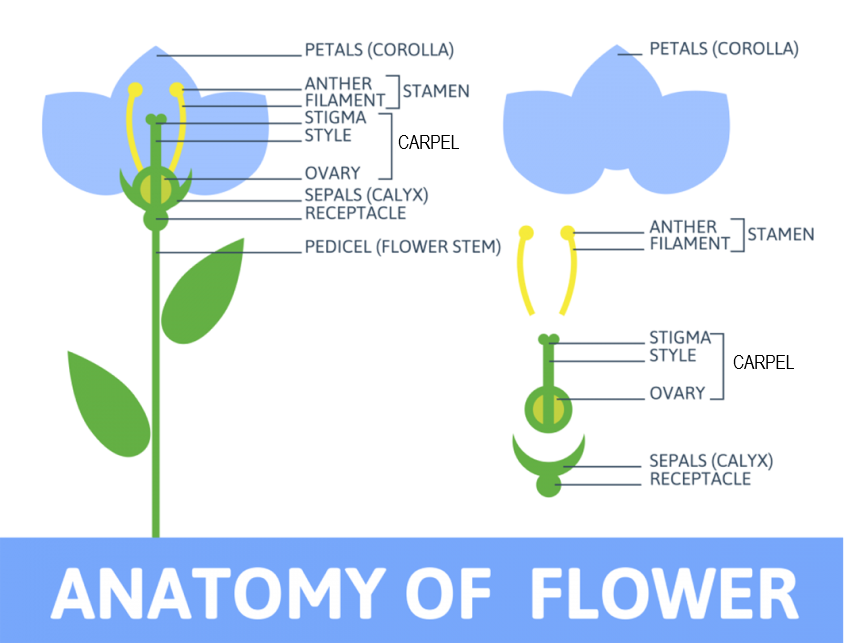Note that your final mark will not be saved in the system.
7. Reproduction in plants GapFill
You must fill all the gaps before clicking ‘Check Answers!’

Reproduction in plants
Flowering plants reproduce sexually. This means that two cells join together to make the new life. These two cells are male and female .
In plants the male cells are called pollen grains, and the female cells are called ovules.
A plant’s reproductive organs are in the . Most plants have both male and female reproductive organs.
The male reproductive system is called the . It consists of:
- The anther, which produces pollen.
- The filament, a stalk that holds the anther up.
The female reproductive system is called the . It is made up of:
- The ovary, which contains the ovules.
- The stigma, where the pollen grains land.
- The , which connects the two, and holds the stigma up.
To make new offspring, the ovules must be fertilised. This happens through pollination.
Pollen grains are transported from one flower to another by insects such as and butterflies, or by the wind.
The stigma of a flower has a sticky coating, so that if pollen grains land on it they will stay there.
If the stigma is the right species, each pollen grain grows a pollen , which grows down the style and into the ovary. The nucleus of the pollen cell travels it and joins with the nucleus of an ovule. The ovule has now been fertilised.
Fertilised ovules develop into seeds, and the ovary becomes the , which contains the seeds.
To have the best chance of survival the seeds need to be dispersed away from the parent plant, so that they do not have to with the parent plant for light and water. This can happen in several ways, including:
- By animals. Animals can carry the seeds on their bodies, like sticky burrs. The seeds stick to the animal’s fur and then fall off in a different place. Fruits such as berries are eaten by animals, and then the seeds pass through the animal’s digestive system and reach the ground in the animal’s .
- By wind. For example, dandelion seeds are very light and have extensions that help them to float in the air.
- By water. Plants that live near water have seeds that can float.
- By . Some fruits are seed pods that burst open, flinging the seeds away from the parent plant.
If a seed lands in favourable conditions it will germinate. To do this it needs oxygen, and warmth.
The seed grows roots and shoots and becomes a young plant, called a seedling.